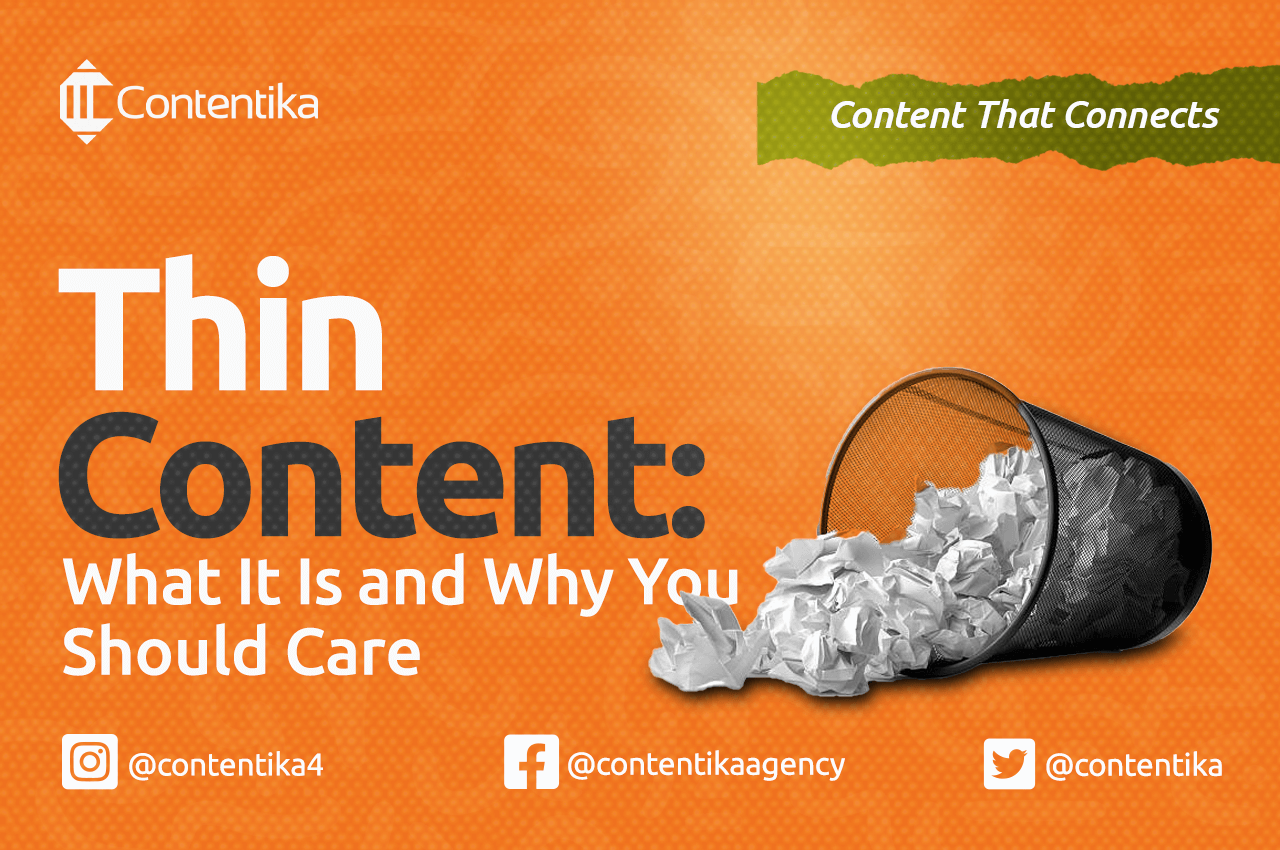The human brain is wired to favor sights over text since the former can be processed and remembered more quickly. The human brain processes images 60,000 times faster than it does text since 90% of the information supplied to the brain is visual
This highlights why it’s so important to use visual material for marketing and consumer communication.
Visuals, like photos on social media, infographics in blog posts, or videos shared across platforms, make people interact more and bring in more customers than text-only content.
In this article, we will discuss the various forms of visual content, how to make them, and their significance in digital marketing.
What Is Visual Content Marketing and Why Is It So Important?
Marketing a brand or product with visual content is called “visual content marketing.” It’s a great approach to getting people interested in your brand and getting them to take action.
More than ever, visual material is essential given the explosive development in the consumption of digital media. Through the use of visual information, which can be used to grab their attention and prompt a response, your clients can develop an emotional bond with your brand.
Instagram, Facebook, and Twitter are just a few of the social media sites that have increased the importance of visual content in brand marketing. It is easier for marketers to share visually appealing content with the audience.
This kind of content, which includes photos, videos, animations, GIFs, and more, may be a potent tool for interacting with clients and fostering bonds. Visual content can increase website traffic and conversion rates by creating a direct link between customers and businesses and moving people from social media platforms to a website.
Benefits of Using Visual Content in Your Digital Strategy
Visual content is a powerful tool that can help businesses stand out, tell their story, and drive engagement. Using visual content in your digital strategy offers numerous advantages.
One of the main benefits of visual content is increased engagement. Studies have shown that people are much more likely to engage with visuals than text-based content, creating an opportunity for businesses to really capture their audience’s attention and make a lasting impression. Visuals stand out on social media platforms and can be used to draw people in and keep them interested.
Another advantage of using visual content is enhanced brand recognition. By creating visuals that are memorable, unique, and in line with your brand identity, you can ensure that people remember your brand and come back for more. Visuals that look good and connect with your target audience will leave a lasting impression on customers and make them more likely to interact with your brand.
Another direct benefit of visual content in digital strategy is increased traffic. Engaging visuals can encourage people to click through from social media platforms, blog posts, and other sources, driving more traffic to your website or other areas. Not only can visuals help draw in new visitors, but they can also engage an already existing audience and encourage them to keep coming back.
Types of Visual Elements in Content Marketing
From colorful infographics to stunning photographs, visuals have the power to catch the eye and communicate a message effectively. There are many different types of visual content to use, each with their own unique advantages and purposes. Here are a few of the most popular types of visual content:
Photos or Images
Images, Fred Barnard said, are worth a thousand words, and using the right images can make your content stand out. Photos help you pass messages across through a visually appealing and easy-to-understand medium. When choosing photos or images to use, ensure you select ones that are relevant to the topic at hand and of premium quality.
Additionally, you should note that not all images are free to use—it’s important to make sure you have the necessary rights or licenses for images that are not in the public domain; be sure to check for any copyright laws or licensing rules associated with the image, and abide by them when they exist.
Also remember to optimize your images for web use. This means reducing the file size as much as possible without compromising image quality and using appropriate file formats like JPEG and PNG. Doing this will help ensure your images load faster on the web.
Stock photos are a great way to get quality images, and many websites offer free stock photos that you can use, such as Pexels, Splash, Pixabay, and iStock. If you want something more custom, consider creating your own photographs or illustrations. This may require additional time and resources, but it will be worth it if it helps convey your message effectively.
Videos
From brief advertisements to lengthy explanatory videos, videos are utilized in a variety of ways to grab viewers’ attention. They have a high level of engagement and effectiveness.
Additionally, videos can be uploaded on a variety of websites, like Vimeo and YouTube, or even incorporated into a website. A clear objective and message, as well as good production value, are necessary for a successful video. To make videos more accessible, they should also have captions or subtitles and be tailored for various platforms.
Super Bowl commercials are an excellent way to illustrate the effectiveness of videos, as an example. The anticipation for these videos is always high, and people look forward to viewing them every year.
10 Best New Super Bowl Commercials 2022
Super Bowl commercials are used as examples of how to make good videos because they are unique, have high production standards, and have themes that are meant to get people’s attention and make them feel something.
Depending on what you want the video to do, you might want to include a call to action or more information about your brand or product.
Infographics
Infographics are visual representations of data or knowledge that simplify complicated material for quick consumption. With the help of charts, graphics, and text, information is presented in a way that is easy to understand.
Infographics are ideal for presenting research results or other statistical data because they allow you to visually explain correlations between multiple data points or concepts. They are also useful for illustrating procedures, outlining schedules, and providing directions.
Infographics are most effective when they employ images to convey the story so that viewers can get the gist of the piece without having to read too much. Make the images your top priority while making an infographic. The point is to make something pretty that people will want to read.
A smart method to involve and inform your audience is to incorporate informational infographics into your blog posts, white papers, and other content. An illustration of an informational infographic could be a certain product’s development and release schedule.
By including an infographic like this in your material, you can assist potential customers in quickly understanding the background and present situation of your product. It can also serve as an introduction to articles that go into greater detail about the product, giving readers background knowledge before diving into more specifics.
You may assist your readers in understanding the background and development of your product by utilizing images to explain crucial topics.
Animations and GIFs
GIFs are not only goofy; they can also be used to communicate more complex messages and emotions. To add some humor and enjoyment to any message, animations and GIFs are frequently utilized in marketing campaigns, websites, emails, and even instant messaging apps.
They are especially popular among Gen Z users, who have grown up with technology as part of their everyday lives. Animations and GIFs can be used to quickly grab someone’s attention and draw them to a message. They are also an effective way to break up long blocks of text and make a message more visually appealing.
What makes animations and GIFs better than still images or videos is that they are easier to produce and can be quickly shared. Animations and GIFs also provide more flexibility when it comes to communicating a message. One of the advantages of using animations and GIFs is that they are relatively easy to create or source from online libraries like GIPHY.
To advertise a new range of coffee items, for instance, a picture of a happy person holding a cup of coffee could be utilized. In comparison, a funny GIF of the same individual sipping from their cup might be used to highlight the flavor and excellence of the product.
This would give the marketing more vibrancy and energy and also make the product stand out in comparison to other competing products.
Popular sock manufacturer Shoe Mint promotes their products with a “C’mon Get Happy” GIF.

The GIF displays a pair of socks carelessly swinging, which can’t help but put a grin on anyone’s face. They use the feel-good factor of the animation to get their point across. This GIF is used in both online and offline marketing efforts, including emails and social media posts.
Screenshots
Sharing a preview of your product, service, or concept with your audience is a great way to get your message across. An excellent tool for this is the screenshot.
Screenshots are a great way to demonstrate to your readers how to do something, and you can even provide in-depth explanations and guidance on the screenshot itself. If your explanation is too complicated to put into words, you may always give an example.
The use of overlays on screenshots is a great way to make your images more interesting and instructive. Overlays allow you to add text, titles, arrows, shapes, pictures, and videos to your screenshot in a layered fashion.
These supplementary features set the scene for your screenshot, making it easier for your readers to focus on the important details you want them to see. Screenshots are a great way to show something visually, so use them the next time you need to.
Data Visualization
To assist your audience in discovering data trends and patterns, data visualization is a great tool. It involves showing data in a way that makes it easy for people to understand and visualize huge amounts of information quickly.
Through visualizing data, you can tell tales with your data and draw logical conclusions from it. You may be able to get your message across to your audience better if you use charts, graphs, maps, or other graphics to highlight important trends in the data.
For example, a line graph might demonstrate how data has evolved over time or compare multiple sets of data. Bar charts are great for comparing data, such as the profits of various businesses. The percentages of each component can be shown in a pie chart. Maps can help you visualize geographic data.
Slideshare Presentation
One common type of visual material in advertising today is the presentation. Slideshare presentations are an excellent medium for disseminating well-organized visual content.
PowerPoint and InDesign are common examples of presentation software used to generate slides that help the presenter get their point across in an interesting and compelling way for the audience.
Slideshare presentations are an excellent alternative for organizations or individuals who want to share their content with a wider audience because they can be easily shared online and used to convey everything from company strategies to research findings to course material.
If you upload a presentation to Slideshare, you can see how many people viewed it and what aspects of the presentation piqued their interest.
Live Streaming Platforms
Live streaming platforms have revolutionized the way we consume visual content. Live streaming allows users to view real-time events from anywhere in the world, providing an unprecedented level of engagement and interactivity that can’t be matched by traditional video content.
This has opened up a lot of new possibilities for both people who make content and people who watch it. For example, people can now stream their daily lives and businesses can hold live Q&A sessions with their customers.
Live streaming platforms provide content creators and viewers with a variety of features that make the experience more engaging and interactive. Most of the major platforms have features like live chat, automatic translation, and support for multiple devices.
Strategies for Visual Content Marketing
To make a splash in the crowded digital space and attract customers, it’s vital to plot out a comprehensive visual content marketing strategy. Using visuals carefully is a surefire way to get people interested and increase your conversion rate.
Some strategies are offered for developing eye-catching visuals that will appeal to your niche:
Understand Your Audience
Learning more about your target market, what they like, and how your content is relevant to them, helps you create an effective visual content marketing strategy. This includes understanding their needs, interests, and preferences; researching their demographics; and analyzing the kinds of visuals they are likely to respond to.
By getting this information ahead of time, you can make better visuals that will get the attention of your target audience.
Prioritize Quality Over Quantity
When employing marketing with visual content, quality should always take precedence over quantity. It’s better to focus on creating a few visuals that are of the highest quality and truly resonate with your audience than to flood them with average visuals.
Creating high-quality visuals takes time, resources, and effort, but it is worth the investment in the long run. Quality visuals will capture your audience’s attention and build a connection with them, ultimately leading to increased engagement, more conversions, and greater customer loyalty.
Focus on the following things to make sure that every image you make is of the highest quality:
- Make sure it reflects your brand values and aesthetic
- Pick visuals that are eye-catching and stand out from the competition
- Ensure it is optimized for different platforms and devices
- Leverage high-quality images, videos, illustrations, or graphics
- Pay attention to any details or text in the image.
Create a Branding Theme That Is Consistent
Maintaining recognition and consistency across all brand visuals is key to creating a successful branding theme. To achieve this, consider the following elements:
Color palette: Choose two or three colors that can be used throughout your marketing campaigns to represent your brand and create unity.
Typography: Select fonts that communicate the personality of your brand and are easy to read across all platforms.
Logo: Your logo should be simple and recognizable, so it can be used as the primary identifier of your brand.
Imagery: Select images that reflect the values and style of your brand to give a visual representation of who you are and what you do.
Use the Right Platforms to Reach Your Target Audience
Different social media channels have different algorithms, features, and user bases. It’s important to research the different platforms and determine which ones your target audience uses most often. You can use this information to create content that resonates with them while also taking advantage of each platform’s unique features.
Instagram, for instance, is fantastic for sharing high-quality visuals like lifestyle and product photos; Twitter is great for interacting with your followers and sharing short snippets of information; and LinkedIn is great for establishing connections and establishing credibility in the professional sphere.
Hashtags on Instagram can help you reach more people, while polls and surveys on LinkedIn can help you learn more about your target users.
If you use the right platforms, you can reach your target audience and make your visual content marketing as effective as possible.
Integrate SEO Techniques into Visual Content Creation
The use of images and videos in online material is the latest technique for improving search engine rankings. It’s a great strategy for expanding your consumer base and generating new leads.
Get the most out of this potent medium by following these guidelines for using SEO best practices while making visual content:
Keyword Research: Use keyword research tools to find out which keywords are being searched for in the visual space. This will give you a better understanding of the phrases potential customers may be using when they search for content related to your business.
Optimize Photos and Graphics: Make sure that the images you use are user- and search engine-friendly. Important places to insert keywords for this purpose include the image’s title, alt text, captions, and descriptions. When saving pictures, it’s also helpful to give them meaningful, keyword-rich names.
For instance, you may help search engine crawlers comprehend the meaning of your infographics by including descriptive text beside them. Search engines can’t automatically figure out what visual content is about, even though humans do this naturally.
Link Your Visual Content: Ensure all visual content you post is linked back to your website. This makes it easier for search engines to find your content and can lead to more people clicking on your website link from the visual content post.
Measure and Analyze the Performance of Visual Content
One way to measure and analyze the performance of visual content is by tracking clicks and visits. This information can tell you a lot about how people interact with your visuals, which can help you figure out how well your visual content marketing strategy is working.
You can also track comments, likes, shares, and other reactions to gauge the effectiveness of your visuals. This gives you a better understanding of how viewers respond to your visual content and can help inform future marketing decisions.
In addition, it’s important to remember the importance of accompanying text with visuals for maximum effectiveness. Text gives important background information that makes visuals easier to understand and more interesting. This helps your visual content marketing strategy be as successful as possible.
How to Repurpose Visual Content Effectively
Repurposing visual content is one of the most effective ways to optimize your online marketing efforts. It involves creating various pieces of content from a single source or taking existing visuals and adapting them to different formats. This can help you broaden your reach, attract new customers, and leverage existing content for additional value. Here are some tips for repurposing visual content effectively:
Adapt for Different Platforms: One of the most effective methods of reusing visual content is to modify it for use in a variety of contexts. This includes social media sites like Instagram, Facebook, Twitter, and even a blog post. For example, you can create an animated GIF out of a static image that you’ve already used on Instagram, or you can turn a blog post into an infographic.
Refresh Your Content: Reusing visuals also includes updating them with new data or insights. Doing so will help maintain the freshness of your material and ensure that it is still useful to readers and potential buyers.
Reuse the Same Content in Different Formats: You can save time and effort by recycling existing images across many media types (webinars, videos, podcasts, etc.) rather than producing brand new content from scratch. Your readers will appreciate the continuity and comfort it provides.
Incorporate User-Generated Content: You can keep your images interesting, up-to-date, and appealing by encouraging user-generated content. Incorporating user-generated information like reviews and images is one example of how this might be done.
As long as you stick to these guidelines, your visual content will always be up-to-date, interesting, and relevant to your audience.
Top Brands with Excellent Visual Content
The use of visual storytelling in advertising has proven effective. It could pique people’s interest and make them feel closer to your company, leading to greater sales and recommendations.
Let’s look at some recent examples of good visual storytelling from well-known brands to get you excited about making your own interesting visual content.
Nike
One of the most well-known brands in the world, Nike is a powerhouse on the international stage.
With motivational slogans like “Just Do It” and “Dream Crazier,” their visual storytelling skills are frequently inspiring.
They use moving pictures and films to hook their audience and make an emotional connection with them.
Nike on Instagram: “Let’s all be part of the change. ⠀ ⠀ #UntilWeAllWin”
Apple
One more well-known company that has found great success with visual content marketing is Apple. They start with a clear plan for turning opinions into marketing results that can be used and are driven by convincing reasons.
Apple’s “Behind the Mac” advertising campaign is one example of the company’s marketing prowess. People’s ability to think beyond the box while using the company’s computers is honored in this stirring ad campaign. A large demographic that is interested in and captivated by the potential of original thought would enjoy it.
Starbucks
Starbucks’ visual storytelling is excellent. Through Instagram, Twitter, and YouTube, the company has reached millions of customers. Starbucks’ “Red Cup” campaign uses visual material to promote marketing results.
The promotion used a red Starbucks cup to encourage people to post photos of themselves sipping from it online. The company’s brand awareness and long-term success grew due to millions of views.
Target
Target’s campaigns combine humor and images well. They sell their products using clever puns and bright colors, creating a joyful and inviting ambiance.
For instance, their Pinterest boards feature eye-catching images of their latest products.
In commemoration of International Women’s Day, Target sponsored a Pinterest campaign honoring influential women.
These women’s statements and photographs highlighted the importance of honoring strong female role models. This content delivers a good message and engages viewers.
Oreo
Brands can learn from Oreo’s visual content marketing. The brand posts visually appealing, product-related material on social media.
Oreo’s 2018 100th birthday celebration used GIFs. The promotion featured “gif-a-day” films of an Oreo mascot doing stupid things and GIFs introducing its varieties. Visually and content-wise, this approach promoted the brand’s anniversary and products.
Conclusion
Understanding the psychology of your audience and using engaging visuals like photos, films, and animations will help you build strong relationships between your brand and its consumers.
These days, in the world of digital marketing, visual content is no longer a luxury but a need.
Successful and smart use of visual storytelling can help you capture your audience’s attention and inspire action. Using striking visuals is a great way to set your business apart in the crowded digital landscape, strike a chord with your audience, and increase interaction.
If you want your visual storytelling to be successful, you need a strategy that incorporates a compelling rationale and an effective means for turning views into meaningful marketing outcomes.












